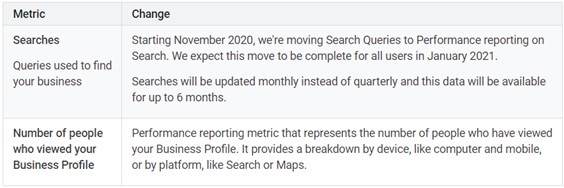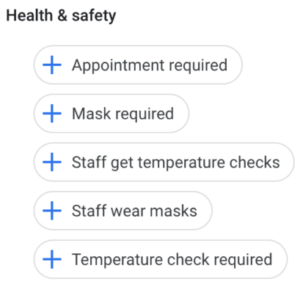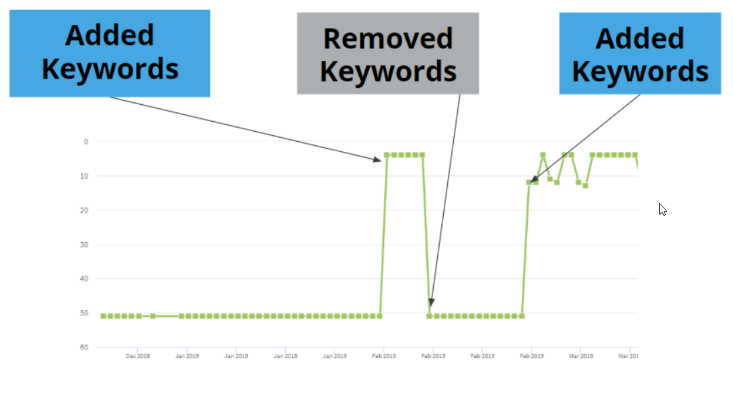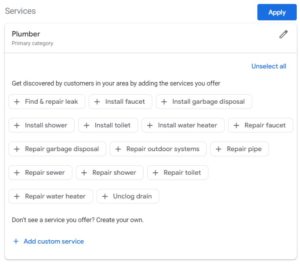Originally developed by David Mihm 12 years ago, the annual Local Search Ranking Factors survey has been used by brands as a guide to understand the most important factors influencing local search results in order to prioritize marketing efforts. This year’s survey, conducted by Whitespark’s Darren Shaw, polled about 50 local SEO experts to collect their opinions on which activities and factors impact local business rankings. The study hopes to help marketers understand what could be changed on their current listing and gives insight into what has helped others increase page rank and conversions. This year, the survey explored seven themes:
- Google My Business
- Citations/Listings
- On-page Factors
- Links
- Reviews
- Behavioral Signals
- Personalization
Changes in Local Ranking Variables
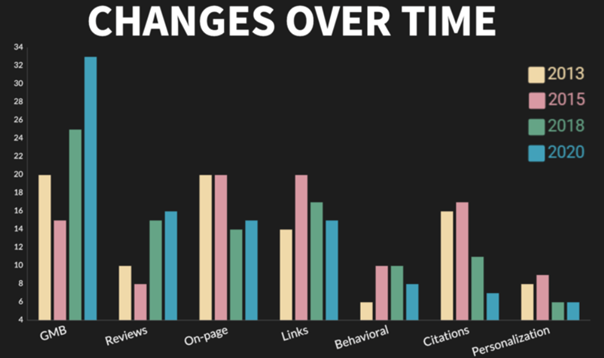
Source: Whitespark, 2020 Local Search Ranking Factor Survey
According to the study, there has been a noticeable shift in influences on the Local Pack and Local Finder variables.
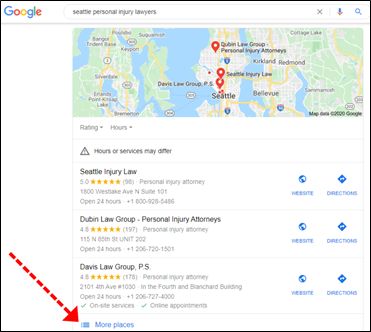
Local Pack Results
Source: Whitespark
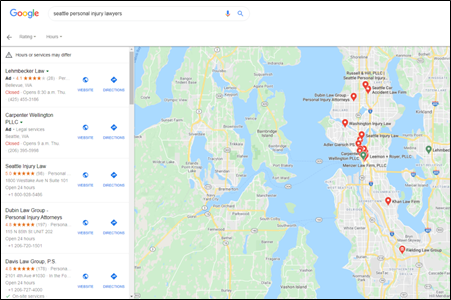
Local Finder Results
Source: Whitespark
Google My Business and reviews are local ranking variables that have increased the most in recent years, while local links, citations and on-page signals are on the decline.
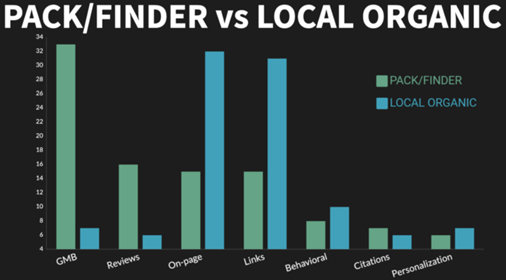
Source: Whitespark, 2020 Local Search Ranking Factor Survey
When comparing the local organic results found lower on the search results page to the Local Map Pack and Local Finder, reviews and GMB seem to have less impact on local organic rankings. The top factors in local organic ranking are links and on-page factors.
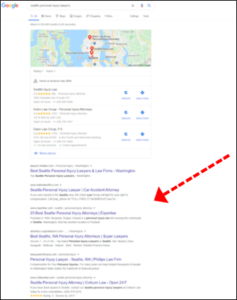
Local Organic Results
Source: Whitespark
Top Local Organic Factors
The impact of local SEO variables was also considered in the study. At the top of the local organic SEO ranking factors, was authority of inbound links. The top five local organic factors were:
- Quality/Authority of Inbound Links to Domain
- Volume of Quality Content on Entire Website
- Keywords in Anchor Text of Inbound Links to Domain
- Topical (Product/Service) Keyword Relevance Across Entire Website
- Geographic (City/Neighborhood) Keyword Relevance of Domain Content
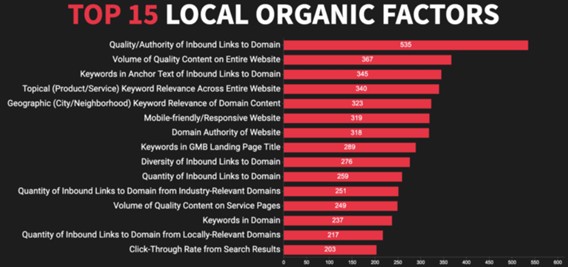
Source: Whitespark, 2020 Local Search Ranking Factor Survey
Top Map Pack and Local Finder Ranking Factors
While the primary GMB business category was the top factor, close behind was adding keywords into the GMB business title, even though Google has stated placing keywords in the business title is prohibited. Additionally, keywords in native Google reviews appear to be a greater ranking factor than review scores, quantity of reviews and completeness of GMB listings.
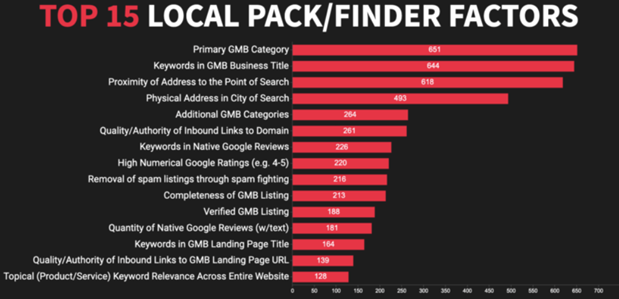
Source: Whitespark, 2020 Local Search Ranking Factor Survey
When taking a detailed look at the GMB Local Pack variables, the top five factors are:
- Primary GMB Category
- Keywords in GMB Business Title
- Proximity of Address to the Point of Search
- Physical Address in City of Search
- Additional GMB Categories
Google My Business Conversion Factors
One of the last questions within the survey was, “Which individual factors do you think have the biggest impact on conversions from GMB?”
Based on the survey’s findings, the top five GMB conversion factors were:
- High Numerical Google Ratings
- Positive Sentiment in Review Text
- Quantity of Native Google Reviews
- Proximity of Address to the Point of Search
- GMB Messaging Feature is Enabled
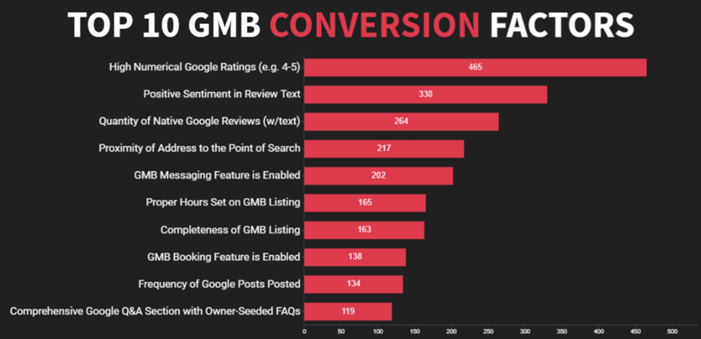
Source: Whitespark, 2020 Local Search Ranking Factor Survey
As seen in the survey results, higher ratings, positive reviews and the quantity of reviews are all top factors in GMB conversions. These findings may add some confusion to the mindset of marketers that are attempting to understand these factors. So, does this mean that conversion factors are more important than ranking factors?
Rankings Vs. Conversions
When Darren Shaw was asked for his key takeaways from this study, he stated, “A #1 ranking isn’t going to drive any leads to your business if your profile doesn’t have any information on it. A complete GMB listing ranking in the #5 spot with products, photos, descriptions, special offers and tons of positive reviews will always beat an empty GMB listing ranking first.”
The findings within this survey suggest that while rankings are important to visibility, Google My Business conversions are more important to potential sales conversions. Higher conversion rates can equate to generating sales and that is not necessarily true of ranking higher on search result pages. Therefore, marketers should continue to fill their GMB profiles with consistent and accurate information to increase customer engagement on search result pages.
There are so many factors influencing how well a business ranks in local search results, it can be difficult for brands to manage their local listings efficiently, especially for hundreds or thousands of locations. Mindstream Media Group offers a full suite of location services solutions including listings management, store locators, data management and location pages. Contact us to learn more about how we can help your brand connect with local consumers searching for the information they need to make buying decisions.


